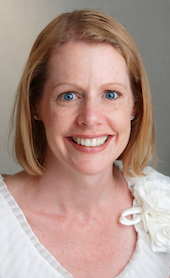Viewing Images Of High-Calorie Foods Brings On High-Calorie Cravings
Research by SC CTSI K scholar Kathleen Page indicates sugary drinks trigger desire for savory foods.
Note: USC researcher Kathleen Page, MD, is an SC CTSI KL2 Alumnae. As part of the program, she recieved support and acquired skills needed to secure a subsequent K23 Career Training Award to continue this research.
You’re minding your own business when a food craving suddenly hits, and if you just saw an image of a cupcake, or consumed a sugary soda, that may be no accident.
USC researchers will present preliminary findings June 26 at the Endocrine Society’s annual meeting demonstrating that viewing pictures of high-fat foods and drinking sweetened beverages while viewing the pictures stimulate appetite and reward centers in the brain.
“Studies have shown that advertisements featuring food make us think of eating, but our research looked at how the brain responds to food cues and how that increases hunger and desire for certain foods,” said Kathleen Page, SC CTSI K scholar and principal investigator and assistant professor of clinical medicine at the Keck School of Medicine of USC. “This stimulation of the brain’s reward areas may contribute to overeating and obesity, and has important public health implications.”

Kathleen Page
Page’s presentation, “Fructose Compared to Glucose Ingestion Preferentially Activates Brain Reward Regions in Response to High-Calorie Food Cues in Young, Obese Hispanic Females,” will be made at 11:45 a.m. Tuesday, June 26 during the Endocrine Society meeting, which takes place from July 23 to 26 in Houston, Texas.
“This stimulation of the brain’s reward areas may contribute to overeating and obesity, and has important public health implications.”
Page and colleagues used functional magnetic resonance imaging (fMRI) to measure the brain responses of 13 obese, Hispanic adolescent women ranging in age from 15 to 25. Women were chosen because prior research indicates they are more responsive to food cues; the study group was narrowed to Hispanic women because of the high risk of obesity and type 2 diabetes in the Hispanic community.
The women’s brain responses were scanned twice as they looked at pictures of high-calorie foods, such as hamburgers, cookies, and cakes, and low-calorie foods such as fruits and vegetables. After seeing the high-calorie and low-calorie groupings, the participants rated their hunger and desire for sweet or savory foods on a scale from one to 10.
Halfway through the scans, the women drank 50 grams of glucose – equivalent to a can of soda – and another time, they drank 50 grams of fructose. Glucose and fructose are the main components of table sugar and high-fructose corn syrup.
“We hypothesized that the reward areas in the women’s brains would be activated when they were looking at high-calorie foods, and that did happen,” said Page. “What we didn’t expect was that consuming the glucose and fructose would increase their hunger and desire for savory foods.”
The researchers also noted that fructose stimulated more hunger and desire in the participants’ brains than glucose did.
“Our bodies are made to eat food and store energy, and in prehistoric days, it behooved us to eat a lot of high-calorie foods because we didn’t know when the next meal was coming,” Page said. “But now we have much more access to food, and this research indicates added sweeteners might be affecting our desire for it.”
With many questions unanswered about whether these cravings are environmental (caused by obesity) or genetic, Page plans to study what happens to the brains of obese individuals while they are dieting.
Also contributing to the research were USC scientists Tanja Adam (Keck School of Medicine), Shan Luo and John Monterosso (USC Dornsife College of Letters, Arts and Science), and Ana Romero and Houchun Hu (Keck School/Children’s Hospital Los Angeles).
The research was funded by the National Institutes of Health and National Center on Minority Health and Health Disparities.
The original article was published on USC.edu
Learn more about the SC CTSI KL2 Scholar program



